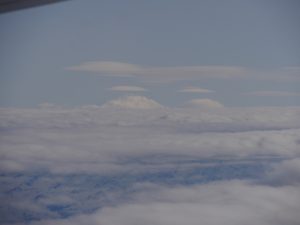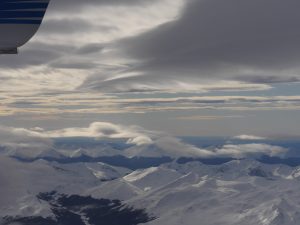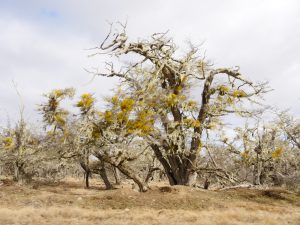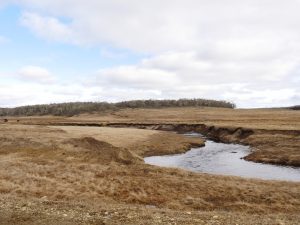Finally, the long-awaited HALO arrived in Rio Grande. We obtained our container from customs and managed to get our first measurements in the flight down to Rio Grande. Now that we are all very excited (and relieved), the real work starts…
Our first few days in Rio Grande was spent by work, work and more work. I was hoping to spend the weekend exploring the town, going hiking or hitting a few bars… However, nightshift and meetings quickly got in the way of that! On Sunday we decided to take half the day off to visit some nearby cliffs. This turned out to be a very good idea and we had a few interesting moments trying to swim in the 3 degrees Celsius ocean… Well, swimming seems to be an overstatement, let us call it a “run-in-run-out-getting-wet-dying-of-cold”…
Monday was the BIG DAY… We all were awaiting the arrival of HALO. For me, that meant to wake up at 3 AM to man the flight and provide support for our sensors operator on board the aircraft. After the arrival of the aircraft, we decided the day is too good to waste. A day without wind, cloud and rain seems to be a rare find this time of the year. We took off to Cabo San Pablo, which looked (on Google) like amazing cliffs surrounded by ocean with an old German wreck from 1946 in the backdrop. However, no google reviews mentioned a 4×4 (and even google street view was available for the gravel road leading there). Nevertheless, we got stuck with our tiny Nissan Micra in mud at least 30cm deep… 30mins of struggle and everyone full of mud from pushing and the spinning front wheel we gave up… No cellphone reception and we saw no-one on the last 20km driving here… Indeed a peculiar position we got ourselves into I thought. Following a 7km hike, we encountered some other scientists from the campaign who could drive back to find help (to explain in English and German, to only Spanish speaking locals). Long story short, we left the prospects of exploring this ‘rumoured’ wreck for another day…


Some nice lenticular clouds (gravity wave clouds – look at the really smooth clouds with a bit of a turn in them)



The landscape we hiked in after we got stuck…


No Comments
Be the first to start a conversation